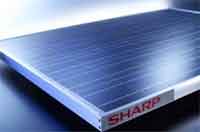| |
|
| |
|
 |
Supply
Chain by the Numbers |
| |
|
| |
- January 26, 2017 -
|
| |
|
| |
|
| |
|
| |
Is a Giant Foxconn Factory Coming to the US? Other Retailers have Far More Employees Per Sales Dollar than Does Amazon; Alibaba Sees Very Rapid Sales Growth Last Quarter, US DC Space Almost Completely Taken in Q4 |
| |
|
| |
| |
| |
30,000- 50,000 |

|
|
|
| |
| |
|
47%
|
|
That is roughly the percent of workers that department store chain JCPenney has versus Amazon - even though JCPenney sales are just about one-tenth those of the on-line giant. The same story could be found in comparing Amazon to many other brick and mortar retail competitors, leading academic Panos Mourdoukoutas to ask how these retailers can hope to compete with Amazon, in a very interesting column on Forbes.com. As an example, Macy's has about 20% of Amazon's sales and 71% of Amazon's employees. Wow. The story will likely repeat itself eventually in the grocery sector, we predict. Mourdoukoutas notes Amazon's experimental Go convenience store, which opened last month in Seattle, allows customers to literally "grab and go" without needing to go through a clerk and a point of sale counter - though Amazon claims customer will see some workers that help to stocks shelves and prepare fresh food offerings. Mourdoukoutas says movements to significantly increase the minimum wage will just put traditional retailers at even more disadvantage and cause layoffs.
|
| |
| |
|
| |
| |
55% |
|
That was the incredible growth that China's Alibaba - the Amazon of Asia - saw in its third quarter, which ended in December. That took quarterly revenue to about $5.75 billion, much lower than Amazon's Q4 revenue also ending in December will be when reported, but keep in mind that Alibaba doesn't really sell products, it instead offers an ecommerce platform that other thousands of other etailers use to sell their goods. The so-called "gross merchandise value" - meaning the retail sales numbers running through Alibaba's - are likely higher than Amazon's sales numbers, but Alibaba has stopped reporting its GMV. The commission the company earns from the sales through its platform grew a much lower 25% in the quarter. And just like Amazon, Alibaba is betting big on growth outside of ecommerce through provision of web services, Cloud computing and other technology services Tto business. Alibaba also said It has submitted a $2.6 billion bid this month to acquire Chinese department store operator Intime Retail Group, saying it intended to use data to digitize offline shopping, though why it needs a brick and mortar store to do that is not clear. |
| |
| |
|
|
|
| |
 |
 |
| |
|
|
| |